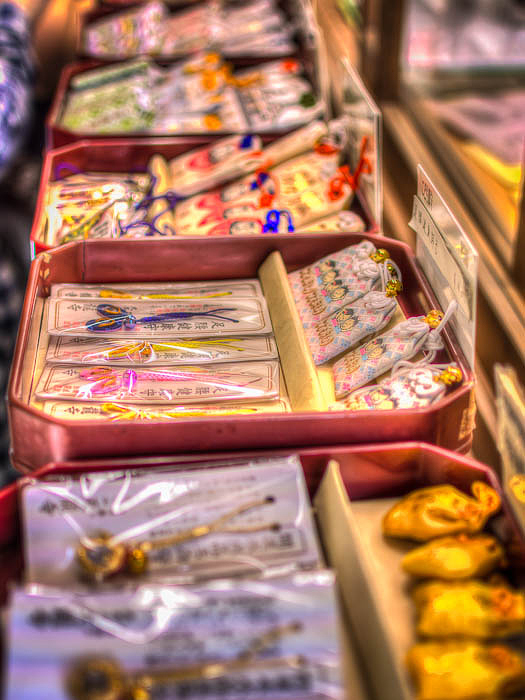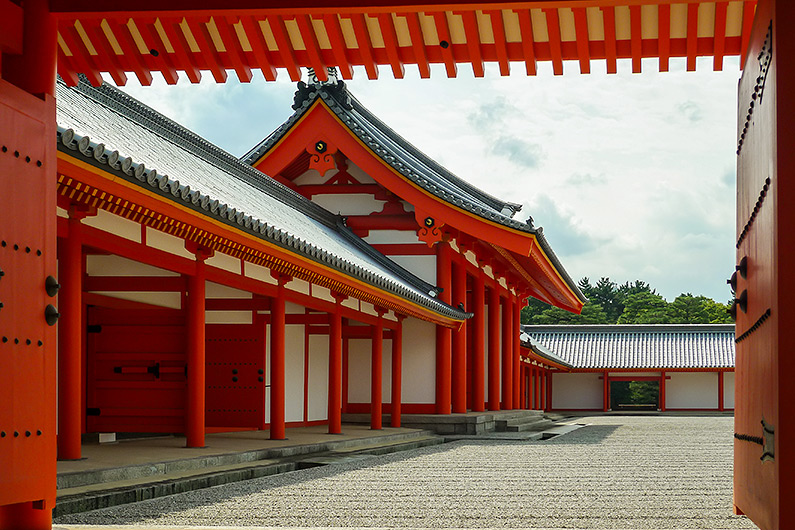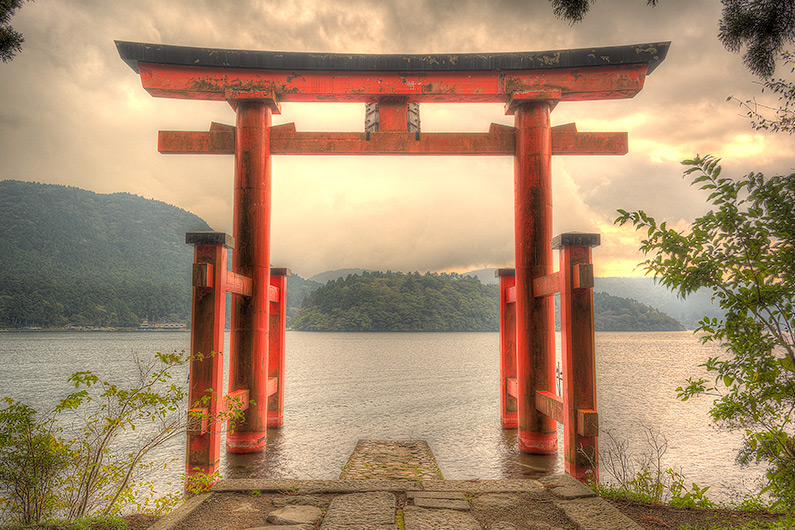Good luck in exams, safety in traffic, prosperity in business and finding someone to marry… all types of good fortune that can be obtained from a small amulet – the Japanese omamori 「お守り」.
Omamori 「amulet, お守り」

Japanese religious traditions are often based in the divine realm, and with the belief that this divine realm has power over the natural world. To combat the causes of strife and catastrophe, certain objects are blessed with the power of kami 「divine spirit, 神」, such as arrows, statues, mirrors, swords and more.
Omamori is one such object containing the power of kami. These amulets are purchased from a shrine or temple, and cost only a few hundred yen. They are usually then kept either on the person (usually in a wallet), in the home or car.
The 7 types of omamori
- Kōtsū anzen 「traffic safety, 交通安全」
- Yaku yoke 「protection from evil, 厄除」
- Kaiun 「general good luck, 開運」
- Gakugyō jōju 「education and passing exams, 学業成就」
- Shōbai hanjō 「success in business, 商売繁盛」
- En musubi 「finding a partner and marriage, 縁結び」
- Anzan 「healthy pregnancy and safe delivery of newborn, 安産」
These are the 7 broad categories of omamori. There can be more specific types within each category.
Omamori are small fabric pouches, with a piece of wood inside. This piece of wood is the actual amulet which has been blessed. The pouch is covered with Japanese characters, often with the name of the shrine or temple, and the kind of power that the amulet provides. The pouch is usually tied with a small string.
This amulet was purchased from Tenryu-ji in Kyoto (1 of 17 UNESCO World Heritage sites in Kyoto).
Reference:
Information on the types of omamori is from A Preliminary Examination of the Omamori Phenomenon by Eugene R. Swanger of Wittenberg University, Springfield. This paper contains a detailed look at omamori and its history.





